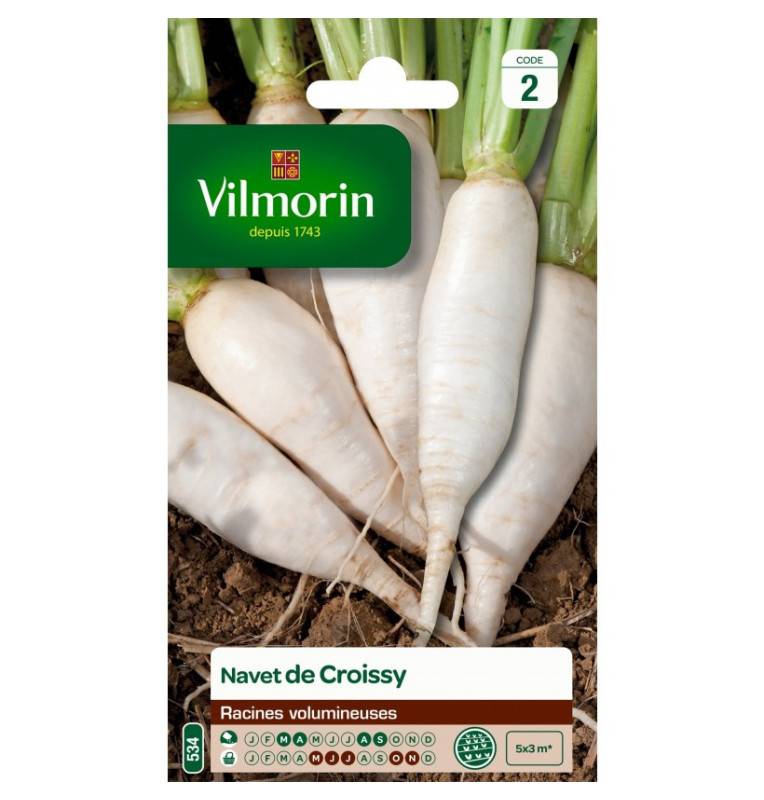


The Turnip of Croissy is a biennial herbaceous vegetable plant of 25 to 30 cm, large white root. Cultivated for its fleshy, spherical and elongated root. Its firm flesh is sweet, it is used raw or cooked in many dishes such as pot-au-feu. Sowing period February to April and July to August for a harvest 2 to 3 months after
Turnip has been known since prehistoric times and has always been part of the diet of northern European men. It is often eaten cooked, in gratin, puree or as an accompaniment to soup, pot-au-feu and stew. Early turnips do not need to be peeled and can be eaten raw, grated and mixed with other raw vegetables. Young turnip leaves can also be eaten in soups. Turnip has diuretic, refreshing, remineralizing properties and contains vitamins (A, B5, B6, C, PP) and minerals (calcium, iron, copper, magnesium).
The many varieties of turnip allow a year-round harvest. This root vegetable has many shapes (long, half-long, round or flat) and colors (white, yellow, pink or purplish).
Turnips require a supply of well-decomposed compost (3 kg/m²) in late autumn or early spring.
Harvest: Turnips are usually harvested two months after sowing. Spring-summer turnips will be harvested according to the needs and desired size, from May to July. Autumn winter varieties, intended for conservation, will be uprooted from October and before the first frosts. To harvest them, lift with the fork-spade and gently pull on the base of the leaves.
Conservation: Let the turnips wipe a few hours on the ground, cut the foliage above the collar. Turnips can be kept for several months in silos or cellars, in dry sand, cool and dark.
The gardener's little trick : Good to know! Planting fennel next to the turnip helps to repel the alterise and turnip fly. If necessary, for better protection, provide a forcing veil or an anti-insect net. Carry out regular weeding and hoeing.
.